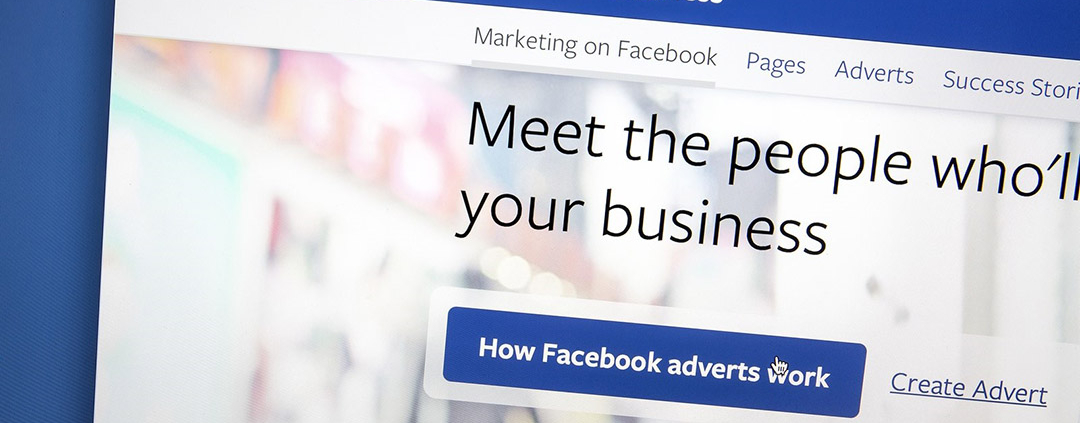6 Reasons to Invest in Facebook Ads Immediately
Here are six reasons why companies should set some money aside to invest in Facebook Ads. The original article is from SEMrush blog. About the author: Sandra Rand is Director of Marketing for OrionCKB, a direct response Facebook agency serving companies in e-commerce, mobile, lead generation and education, among others. Connect with her on Twitter. Image courtesy of ibphoto via Bigstockphoto.
In marketing, your job is never done. My To-Do-list-turned-wish-list is a testament to that. I’m sure most of you are nodding your head in agreement.
Figuring out the right combination of your marketing mix is always a moving target. New channels emerge, budgets and spending patterns change, performance fluctuates, attribution remains a thorn in your side.
There’s always something to do, something to do more of, and something to spend more on.
If you’re reading SEMrush’s blog, I’m going to wager you have SEO (or some variation like content marketing) in your list of active marketing channels.
Paid social advertising can be an incredible complement to your organic efforts. Facebook ads in particular can do wonders to inform your SEO strategy, and vice versa, using behavior and queries from organic visitors to give you valuable insights that can help your paid advertising perform better or reach goals faster.
Why should you prioritize Facebook ads as a sister channel to your search engine optimization?
1. Facebook advertising complements long-term SEO efforts by driving results quickly.
From where we sit, paid advertising plays a large part of our clients’ sales and lead generation strategy. There’s no other medium like Facebook where you can get access to a certain type of user (in terms of volume and scale) to drive conversions and quickly test to figure out how your message is received.
Facebook can help you validate new ideas quickly, giving you rapid feedback into new customer segments, A/B test new landing page formats and copy and figure out which offers convert the best. Spend a fair amount of money up front, and Facebook advertising can get you to statistical significance within a week or 10 days.
The best part is that you can test and learn these insights without hurting your organic traffic. When you learn what is most effective and drives higher conversions with Facebook advertising, you can act confidently when modifying your organic strategy, rather than fearing that certain tests would damage your hard earned search rankings.
2. Facebook ads help accelerate the research cycle.
Search has always been the most accessible way to capitalize on intent. But Facebook advertising can also jump start or massage your customer’s journey to purchase.
This is particularly true with a strong retargeting strategy, but Facebook’s Partner Categories are giving advertisers another opportunity to position their brand in front of consumers who are ready to buy. These data sources provide advertisers with segments of Facebook users who have been identified as seeking certain products or services, have made recent purchases or experienced life events that qualify them as hot prospects for your offer.
It pains me that I cannot find a more recent stat, but a 2011 study of US smart phone users found that 71% of them search for something after being inspired by an ad they’ve seen.
When getting in front of these highly targeted audiences, Facebook ads build this brand awareness and can make a measurable impact on intent-based or branded search queries that result in more qualified traffic to your site (remember when I said attribution was a thorn in your side? This is an example of why).
3. Your inbound search queries can be used to formulate Facebook ad targeting.
While Facebook doesn’t offer keyword targeting as clearly and directly as Twitter ads or AdWords, you can translate keyword searches and geographic or demographic information into highly targeted cohorts for advertising on Facebook.
Say you offer an app that helps users centralize their health data from various sources like wearable devices, calorie counting apps, and health provider intranets. You’re getting a lot of organic traffic from Seattle, Raleigh, Boston and Los Angeles, the majority being women looking to “track my health” or for “health fitness apps android.”
This can chart you to a number of targeting options for Facebook advertising that will resonate in the news feed of a qualified audience. Couple the device, gender and location of this traffic and you’ve already got yourself an audience that you can work from (albeit a small one, but you can recreate this at scale with a wider geographic location). Layer interests or lifestyle types provided by Facebook’s Partner Categories and you can ensure your message will find its way to a highly relevant audience.
What’s more, the keyword phrases and terms used to find your website through search can clue you in on how to address customer needs through your ad copy.
4. Facebook Ads Manager can give you insight into new content ideas, microsites to build, partners to build links with or promotions to offer.
Audience insights available in Facebook’s ads manager can be a wealth of information if you’re looking for new content ideas to expand on your existing library or to make inroads with new customer segments.
In Ads Manager, navigate to Tools, drop down to Audience Insights and select Everyone on Facebook. (Selecting “people connected to your page” may give you a skewed or inaccurate representation depending on how you acquired these likes.)
Fill in some high-level demographic information about your target audience, and get access to the Facebook pages that are likely to be relevant to your audience based on their likes.
If you’re selling dog products and find that your customers are typically women ages 30-65, Audience Insights reports that household supplies, health and wellness and TV networks are among some of the top categories of pages liked by this group. Job titles and lifestyle data (demographic and interest data based on purchase behavior, brand affinity and other activities) can also jump start some new content creation ideas.
5. Facebook ads empower you to retarget people who arrived to your site through SEO.
Ok, to be fair, Facebook’s website custom audience (WCA) pixel tracks people who arrived to your site regardless of the channel they came in on. And, you can’t segment your Facebook ads to then retarget only people who visited you from a search engine.
However, WCA pixels help you do a couple things that allow you to take all the hard work you’ve done with SEO and bring it to the next level in ways only paid advertising can do:
- You can retarget people who visited your website. You can proactively attract those users back to your funnel who visited certain pages within your site but did not convert.
- You can create Lookalike segments to target folks on Facebook who are similar to those people who visited your website. This becomes infinitely more powerful if you target lookalikes of people who took certain actions that drive value for you.
6. Facebook complements SEO by reaching people at different stages in the buying process.
Different marketing channels obviously bring you varying levels of success. Some bring a low volume of high-quality customers and others drive masses of lower lifetime value customers.
When consumers use search to find products and services to satisfy a need, their search terms will range from broad and information-seeking in the research phase to specific and transactional toward the bottom of the funnel.
Paid advertising through Facebook can help fill the areas of your funnel that are sparse – from demand generation to direct response – helping you to appeal to a broader group of potential customers by meeting them at different stages in their search for the solutions or products you offer.


